Australia’s water dragons are being changed by urban life.

A LIZARD BASKS IN the subtropical sun. It’s almost a metre long and powerfully built, with muscular hind limbs and an impressive crest of spines running down its neck and back. It warily eyes a similar large male lying nearby; both are scarred from recent disputes.
Yet it seems indifferent to people crouching around, taking photos with their phones and posing for selfies. For these lizards aren’t in the bush. They’re sprawled out beside an ornamental pond in central Brisbane just a few hundred metres from the bustling Queen Street Mall and Roma Street Transit Centre.
Water dragons live along almost every water course in eastern Australia. They’re not fussy; pristine rivers, polluted suburban creeks, even ornamental ponds will support populations. Away from urban areas, they’re shy and difficult to approach, primed to plunge into a river, shin up a tree or vanish into the undergrowth at the slightest disturbance.
But city-slicker dragons are different. They’ve grown used to us, readily accepting handouts and even lurking under restaurant tables, ready to snap up fallen morsels.
Brisbane’s water dragons are thriving, with healthy populations occupying parks and gardens across the inner city. And, it seems, their unusual choice of habitat is causing them to evolve rapidly. The busy hubbub we associate with city life – roads, railway lines, shopping malls – has isolated certain populations, acting as a barrier that’s just as effective as an ocean around islands, leading to a scenario that’s been dubbed ‘archipelagos of the Anthropocene’ by researchers from the University of Southern Queensland.
Denne historien er fra January/February 2019-utgaven av Australian Geographic Magazine.
Start din 7-dagers gratis prøveperiode på Magzter GOLD for å få tilgang til tusenvis av utvalgte premiumhistorier og 9000+ magasiner og aviser.
Allerede abonnent ? Logg på
Denne historien er fra January/February 2019-utgaven av Australian Geographic Magazine.
Start din 7-dagers gratis prøveperiode på Magzter GOLD for å få tilgang til tusenvis av utvalgte premiumhistorier og 9000+ magasiner og aviser.
Allerede abonnent? Logg på

SULAWESI SENSATIONS
There are worlds within worlds and marvels untold waiting to be experienced on Indonesia's remote islands.
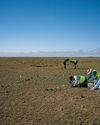
SEARCHING FOR AUSSIE DINOSAURS
Our understanding of where to find ancient life in Australia has been turned on its head by a new appreciation of the country's geology. Now the world is looking to our vast outback as the latest hotspot to locate fossils.
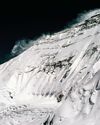
THE HARDEST NIGHT
The first Australian ascent of Mt Everest in 1984 is one of the great feats of mountaineering. Climbed by a small team semi-alpine style, with no bottled oxygen, via the Great (Norton) Couloir, it remains unrepeated 40 years later.
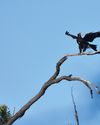
WEDGE-TAILED WONDER
The chance discovery of an eagle nest leads to an extended vigil observing normally hidden behaviours of one of nature's supreme winged marvels.
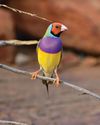
BURDENED BY BEAUTY
Northern Australia's Gouldian finch survives in huge numbers in cages around the world, but its wild population continues to struggle.
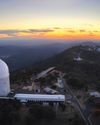
A TELESCOPE FOR A GOLDEN AGE
After a stellar 50 years as one of the country's major scientific assets, the AAT continues to play a major role in keeping Australian astronomy on the world stage.
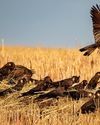
COCKY WHISPERING AT COOMALLO CREEK
This patch of remnant bush on the edge of the West Australian wheatbelt is a place loved by one of Australia's rarest bird species and the man who has studied the site for more than 50 years.

A PIONEERING PAIR
Louisa Atkinson and her mother, Charlotte, were among Australia's earliest authors, and pioneers in women's rights.

THE LONGEST WALK
Lucy Barnard is walking from Argentina to Alaska -the length of the Americas - on an extraordinary journey of endurance and adventure.
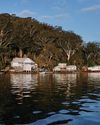
SECLUDED, BUT NOT ALONE
In an era of heightened social isolation, where many of us lead lonely lives, Dangar Island offers the chance to be part of a supportive, connected community.